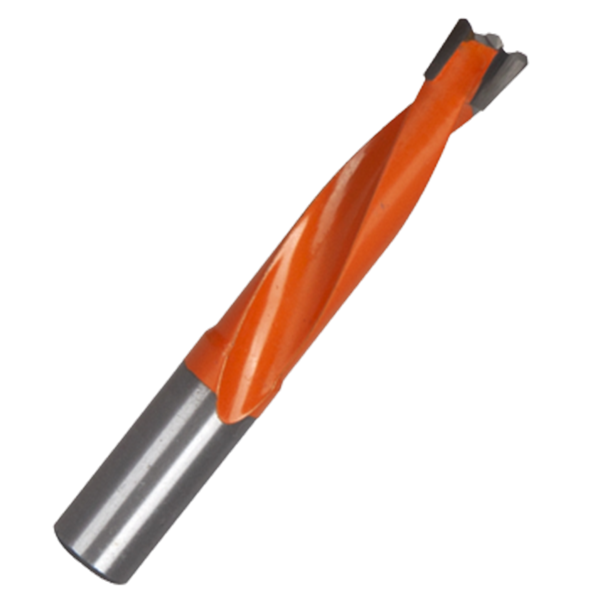What is the standard thickness of a saw blade?
Whether you are doing woodworking, metalworking or any form of cutting, a saw blade is an essential tool. The thickness of a saw blade can significantly affect its performance, durability, and cut quality. In this blog post, we’ll take a closer look at standard saw blade thicknesses, exploring the various types, their applications, and the factors that affect their thickness. This guide is designed to provide valuable insights to professionals and DIY enthusiasts alike,understanding the importance of saw blade thickness will enhance your cutting experience and improve the quality of your work.
What is a saw blade?
A saw blade is a round or flat piece of metal with serrations used for cutting a variety of materials. Saw blades come in different shapes, sizes, and thicknesses, each designed for a specific cutting task. The thickness of a saw blade is a key factor affecting its cutting efficiency, stability and overall performance.One way you improve your cutting efficiency is by using the right saw blade thickness for the material you are cutting. By selecting the right saw blade thickness, you can optimize your cutting times and achieve better results.
The importance of saw blade thickness
1. Cutting performance
The thickness of a saw blade plays a vital role in its cutting performance. Thicker blades tend to be stronger and more stable, allowing for straighter cuts and reducing the risk of blade deflection. Thinner saw blades, on the other hand, allow for finer cuts and are often preferred for complex jobs. Understanding the balance between thickness and cutting performance is critical to choosing the right saw blade for your project.
2. Material Compatibility
Different materials require different saw blade thicknesses. For example, cutting hardwood may require a thicker blade to withstand the pressure, while softer materials, such as plywood, can be cut efficiently with a thinner blade. Knowing the standard thicknesses of various materials can help you choose a saw blade that suits your needs.
3. Durability and longevity
Thicker saw blades generally have greater durability and longevity. They are less prone to bending and can withstand higher stresses during cutting. This is especially important for industrial applications where the saw blade is used continuously. Conversely, thinner saw blades may wear out faster and require replacement more frequently.
Standard thickness of saw blade
1. Circular saw blade
Circular saw blades are one of the most common types of saw blades used in woodworking and metalworking. Standard thicknesses for circular saw blades typically range from 0.08 in. (2 mm) to 0.125 in. (3.2 mm). Thicker blades are typically used for heavy-duty applications, while thinner blades are suitable for precision cuts.
2. Table saw blade
Table saw blades are designed specifically for table saws and are available in a variety of thicknesses. Standard table saw blade thicknesses typically range between 0.094 inches (2.4 mm) and 0.125 inches (3.2 mm). The choice of thickness depends on the type of material to be cut and the desired surface effect.
3. Band saw blade
Band saw blades are characterized by their continuous ring design and are typically used for cutting curves and irregular shapes. Standard band saw blade thickness ranges from 0.014 in. (0.36 mm) to 0.032 in. (0.81 mm). Thicker band saw blades are great for cutting thicker materials, while thinner blades excel at making complex cuts.
4. Jigsaw Blade
A jigsaw blade is a versatile tool that can be used to cut a variety of materials. The standard thickness of jigsaw blades is typically 0.025 inches (0.64 mm) to 0.05 inches (1.27 mm). Thinner blades are suitable for fine work, while thicker blades are better suited for cutting denser materials.
Factors affecting saw blade thickness
1. Material type
The type of material being cut is one of the most important factors affecting saw blade thickness. Harder materials like hardwood and metal require thicker saw blades to handle the increased pressure. Softer materials such as cork and plastic can be cut effectively with thinner saw blades.
2. Cutting technology
The cutting technology used will also affect the choice of saw blade thickness. For example, rip cuts (that is, cutting along the grain of the wood) may require a thicker blade for stability. Conversely, crosscuts (i.e., cutting across the grain) may require a thinner blade for a cleaner finish.
3. Machine compatibility
Different cutting machines have specific requirements for saw blade thickness. For example, table saws and circular saws may have limitations on the thickness of the blade they can accommodate. Be sure to check the manufacturer’s guidelines to ensure compatibility and optimal performance.
4. Expectation to be completed
The desired cutting performance will also determine the choice of saw blade thickness. Thinner saw blades tend to produce smoother cuts with less tearing, making them ideal for projects where aesthetics are important. Thicker blades may leave a rougher surface but are better for faster cuts.
Choose the appropriate saw blade thickness
1. Assess your project needs
Before selecting a saw blade, the specific requirements of the project must be evaluated. Consider the type of material you want to cut, the desired finish, and the cutting technique you plan to use. This evaluation will help you determine the appropriate thickness of your saw blade.
2. Check manufacturer specifications
Be sure to refer to the manufacturer’s specifications for the saw blade you plan to use. Manufacturers often provide guidance on recommended thicknesses for various applications to ensure optimal performance and safety.
3. Try different thicknesses
If you are not sure what thickness is best for your project, consider trying a different saw blade. Testing various thicknesses on scrap material can help you determine which saw blade will provide the best results for your specific cutting needs.
In conclusion
The standard thickness of the saw blade is a key factor affecting cutting performance, material compatibility and durability. Understanding the various types of saw blades and their thickness can help you make an informed decision when choosing the right saw blade for your project.
By considering the factors that affect saw blade thickness and following the guidelines outlined in this blog post, you can ensure you choose the right saw blade for your specific needs. Remember, the right thickness is critical to achieving clean, precise cuts and extending the life of your saw blade.
Are the Expensive Blades Worth It?
If you’re asking if the higher quality blades are worth it in the long rung the answer is pretty much always yes. The higher quality blades stay sharper longer and can be resharpened instead of just replacing it. Once you go through two or three lower quality blades you realize that you could have just bought a better one and saved money. I know that your particular budget will be the deciding factor but I would suggest you try to go with the highest quality blade that you can afford.
If you need to sharpen a circular saw blade, take it to a professional. Sharpening some blades require specialty tools that most do-it-yourselfes don’t have. Attempting to sharpen other types of circular saw blades yourself risks ruining the blades.
To reduce the need to sharpen your blades, look for carbide-tipped blades. They’re more expensive than other blades, but they stay sharp much longer than steel or high-speed steel blades.
HERO can help you improve your cutting efficiency, save time, and reduce costs!
Post time: Nov-15-2024








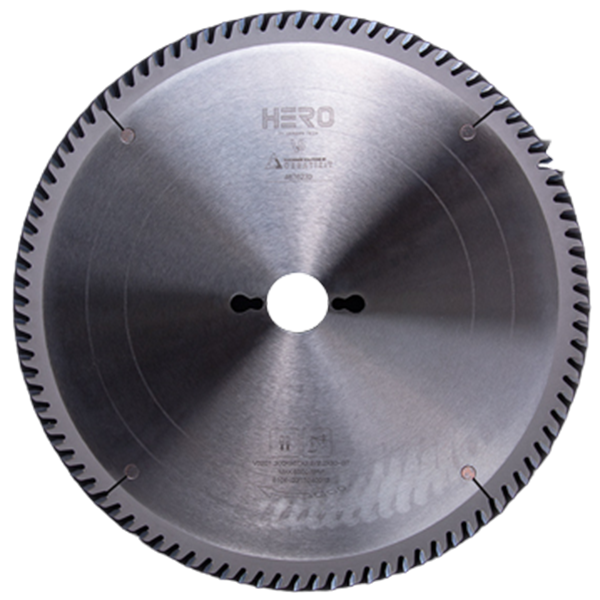 TCT Saw Blade
TCT Saw Blade HERO Sizing Saw Blade
HERO Sizing Saw Blade HERO Panel Sizing Saw
HERO Panel Sizing Saw HERO Scoring Saw Blade
HERO Scoring Saw Blade HERO Solid Wood Saw Blade
HERO Solid Wood Saw Blade HERO Aluminum Saw
HERO Aluminum Saw Grooving Saw
Grooving Saw Steel Profile Saw
Steel Profile Saw Edge Bander Saw
Edge Bander Saw Acrylic Saw
Acrylic Saw PCD Saw Blade
PCD Saw Blade PCD Sizing Saw Blade
PCD Sizing Saw Blade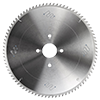 PCD Panel Sizing Saw
PCD Panel Sizing Saw PCD Scoring Saw Blade
PCD Scoring Saw Blade PCD Grooving Saw
PCD Grooving Saw PCD Aluminum Saw
PCD Aluminum Saw PCD Fiberboard Saw
PCD Fiberboard Saw Cold Saw for Metal
Cold Saw for Metal Cold Saw Blade for Ferrous Metal
Cold Saw Blade for Ferrous Metal Dry Cut Saw Blade for Ferrous Metal
Dry Cut Saw Blade for Ferrous Metal Cold Saw Machine
Cold Saw Machine Drill Bits
Drill Bits Dowel Drill Bits
Dowel Drill Bits Through Drill Bits
Through Drill Bits Hinge Drill Bits
Hinge Drill Bits TCT Step Drill Bits
TCT Step Drill Bits HSS Drill Bits/ Mortise Bits
HSS Drill Bits/ Mortise Bits Router Bits
Router Bits Straight Bits
Straight Bits Longer Straight Bits
Longer Straight Bits TCT Straight Bits
TCT Straight Bits M16 Straight Bits
M16 Straight Bits TCT X Straight Bits
TCT X Straight Bits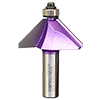 45 Degree Chamfer Bit
45 Degree Chamfer Bit Carving Bit
Carving Bit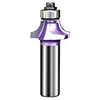 Corner Round Bit
Corner Round Bit PCD Router Bits
PCD Router Bits Edge Banding Tools
Edge Banding Tools TCT Fine Trimming Cutter
TCT Fine Trimming Cutter TCT Pre Milling Cutter
TCT Pre Milling Cutter Edge Bander Saw
Edge Bander Saw PCD Fine Trimming Cutter
PCD Fine Trimming Cutter PCD Pre Milling Cutter
PCD Pre Milling Cutter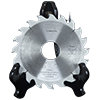 PCD Edge Bander Saw
PCD Edge Bander Saw Other Tools & Accessories
Other Tools & Accessories Drill Adapters
Drill Adapters Drill Chucks
Drill Chucks Diamond Sand Wheel
Diamond Sand Wheel Planer Knives
Planer Knives


